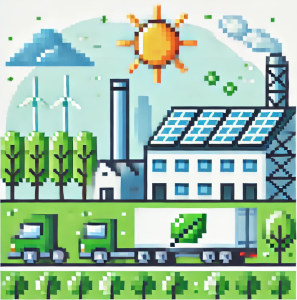
Are the Sustainable Development Goals Falling Short?
Imagine a world where economic growth, environmental sustainability, and social equality harmonize seamlessly—a utopia that the United Nations envisioned with the 2030 Agenda for Sustainable Development. The 17 Sustainable Development Goals (SDGs) were designed to end poverty, ensure global well-being, and protect the planet. But are they enough to create a sustainable future, or are they riddled with contradictions?
A recent study uncovers the surprising gaps and overlaps in these goals. Their findings reveal a startling tension between human development and environmental sustainability—one that could shape the future of our planet.
Beyond GDP: What Really Drives Development?
For decades, we’ve used Gross Domestic Product (GDP) as the gold standard for measuring a country’s success. It’s simple: higher GDP means more wealth, and by extension, a better quality of life—or so we thought.
This research reveals that while GDP and the Human Development Index (HDI) align closely with many SDGs, they come with a hidden cost: higher CO₂ emissions and ecological footprints. This means that as nations grow wealthier, they often do so at the expense of the environment. For instance, while developed countries like the U.S. and Germany excel in economic and social metrics, they also consume disproportionate natural resources.
This trade-off is like upgrading to a luxury car only to find that it guzzles fuel and pollutes the air. Is it truly an upgrade if it compromises the future?
The Kuznets Curve: A Hopeful or Harmful Trend?

The study also points to an intriguing pattern: the Kuznets Curve. This theory suggests that economic inequality and environmental damage initially worsen with development but improve as nations become wealthier.
Consider this: a country in its early stages of industrialization often prioritizes economic growth, leading to income gaps and environmental degradation. Over time, as wealth increases, policies and technologies emerge to address these issues. But here’s the catch—this curve doesn’t guarantee improvement. Developing nations often get stuck in the middle, unable to balance growth with equality and sustainability.
Countries like Brazil and South Africa exemplify this challenge. Despite their significant progress, income inequality and environmental degradation remain pressing issues. The question remains: Can developing nations bypass the pitfalls of early industrialization, or is the curve an inevitable hurdle?
Governance: The Unsung Hero of Sustainable Development
The authors highlight a critical factor often overlooked in discussions about sustainability: governance. Strong institutions and effective policies are the backbone of achieving the SDGs. Countries with transparent, well-coordinated governments fare better at balancing economic, social, and environmental goals.
Take China as an example. The nation’s rapid economic growth has come at a steep environmental cost. However, in recent years, China has pivoted to a more balanced approach, emphasizing environmental protection and anti-corruption measures. This shift showcases the power of governance to recalibrate priorities and align public values with long-term sustainability.
Could other nations replicate this model, or does it require unique circumstances?
The Missing Pieces: Why the SDGs Aren’t Enough
While the SDGs are a monumental step forward, the authors argue they don’t tell the whole story. Metrics like the Ecological Footprint (EFP) and the Happy Planet Index (HPI) offer fresh perspectives on sustainability. The EFP reveals the environmental cost of human activities, while the HPI focuses on well-being achieved with minimal ecological impact.
Surprisingly, countries with lower GDPs, such as Costa Rica, rank high on the HPI. They demonstrate that happiness and sustainability can coexist. Yet, these nations also face challenges like political instability and economic stagnation, showing that no single metric can encapsulate the complexity of sustainable development.
Jumping Out of the Box: Rethinking Progress
What if we reimagined progress? The study suggests that embracing new indicators and theories could help nations avoid development failures. For example, combining economic, social, and environmental metrics could create a more holistic view of progress, one that aligns with the Earth’s carrying capacity.
This shift would require us to prioritize long-term well-being over short-term gains. Imagine a world where countries compete not for GDP growth but for reducing inequality, improving happiness, and preserving natural resources. It’s a radical idea—but one that could redefine what it means to thrive.
Join the Conversation
What does sustainable development mean to you? Should nations prioritize economic growth or environmental health?
How can we balance competing priorities like income equality and ecological preservation?
We’d love to hear your thoughts! Share your perspective in the comments below and join the discussion about building a sustainable future.
Join the Science Adventure:
Stay updated with the latest discoveries in science! Our weekly newsletter is perfect for teachers and science enthusiasts. Get the newest research, major breakthroughs, and fascinating stories delivered to your inbox for free. Enhance your teaching and learning. Subscribe today! If you liked this blog, please share it! Your referrals help This Week in Science reach new readers.



